I'm just tinkering around trying to better understand the roles of various resistors in opamp circuits and was surprised by this result.
Asked
Active
Viewed 188 times
1 Answers
5
U2 is configured as a unity gain buffer i.e. a voltage amplifier with a gain of 1. So it outputs the 2.5 V on its non-inverting input.
U1 is a configured as a comparator. It compares the 2.5 V with the 1.25 V from the R1:R2 potential divider. The comparator's - input voltage is greater than its + input voltage so its output is close to 0 V.
R3 performs no role in that. If U1 had an open-drain output, as some comparators do, it would act as a pull-up to U1's 2.5 V output. Otherwise, it can be removed.
TonyM
- 21,742
- 4
- 39
- 62
-
2If R3 wasn't there U1 and U2 would be fighting it out with their outputs and minus inputs tied directly together. U1 wants the voltage at that node to be 1.25 V, and U2 wants 2.5 V. R3 means U2 wins. – stretch Dec 18 '21 at 05:39
-
1He means remove R3 and the lines going to it completely, not replace R3 with a short circuit. – Tom V Dec 18 '21 at 12:34
-
@TonyM Thanks for your guy's responses. I appreciate it. Could you elaborate on U1 being configured as a comparator? I guess I was under the false impression that giving an opamp a feedback path means it is not configured as a comparator. Thank you :) – Toasty Dec 20 '21 at 18:56
